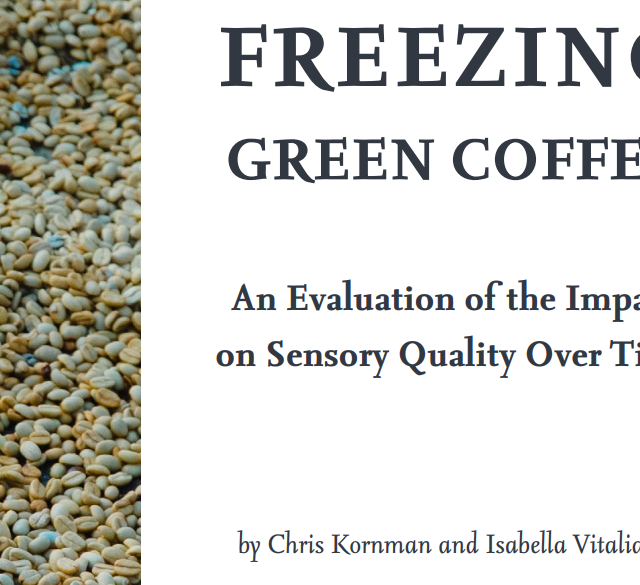Plastic surrounds us. There’s no two ways about it – just look around you right now and you’ll see how many objects contain plastic. My phone is plastic, that cup is plastic, and my pants probably have some synthetic fibers in them as well. My sandwich is in a plastic bag, and the lettuce I bought for it came in a plastic bag, too. I made a conscious effort to reduce my carbon footprint today and rode my bike, which is made mostly of plastic.

But couldn’t we deal with using less plastic in the coffee industry? Plastic wasn’t used for packaging for most of the industry’s history, no matter whether the coffee was green, roasted, or quaffed. Before containerized shipping, breakbulk green coffee was shipped in bushels from origin. Later jute sacks became the norm, and as a matter of fact this simple solution is still the most widely used for specialty coffee. Nowadays, high grade specialty coffee comes shipped in a plastic liner. Though this is sure to preserve some of the coffee’s quality, we’re willing to bet there are more elegant solutions than the brute force of polyethylene terephthalate. We have the technology, and it won’t cost six million dollars, either.
Some technology becomes regarded as obsolete, and even misguided over time. Single use plastic is one of those technologies.
Roasted coffee used to come in a paper bag, or in a tin. Now we have special valves and liners, and single-use polyethylene bags. Folks used to sip their coffee from a ceramic cup at a café. Now we have PLA-lined single-use paper cups. Instead of us staying for a few minutes at a café, our plastic waste is lingering in the environment for a few centuries.
So, while we understand that plastic is inescapable at this point, we would like to do what we can to minimize our use of it. By this point, you’ve probably noticed Royal’s cloth sample bags and metal sample trays. These are here to stay, and at the end of their life they’re fully compostable or recyclable. We are also actively seeking a biodegradable (or better, compostable) option for jute liners at origin. It is no easy task to sway the producers of packaging solutions; there are entire supply chains, specialized manufacturing lines, and years of back-stock of raw materials devoted to plastics production. But we refuse to give up on this.
The tipping point will be when the price of environmentally sound and effective packaging solutions drops below the price of standard plastics manufacturing. Single use plastic is too convenient. It is incumbent upon major industries to reduce the demand for these plastics to the point where they are no longer economically attractive. We would like to do our part.
As we are seeing, the true price of single use plastic is much higher than we might suppose, and the tipping point was years ago.




An excellent introduction
Great blog. No more grainpro bags! We survived without them before, we can survive the future without them too! They have added great volume to our weekly trash pick up.
Well, fwiw I re-use grainpro / ecotact bags for all kinds of stuff. Still, I can see where it would be great if they bio-degraded. I’m really skeptical of recycling plastics at this point but even that would be nice.
One place where I believe all the roasters could replace their wholesale bags with something like http://www.tekpaksolutions.com bags. I’m contacting them now and plan on switching over to degradable bags myself. There’s also Elevate packaging and the Oxo stuff, but so far Tekpak is the only place that has what I was looking for – 1,2 and 5# bags / SUPs in white.
Even with the degradable bags I am concerned about micro-plastic particles from them. I hope that isn’t a problem!
I know Royal isn’t in the bag business, but boy would it be nice to be able to get these bags from a US warehouse. FWIW I sent a link to this blog post to Tekpak in hopes they may be interested in the grainpro / ecotact side of things.
If anyone else has a source for compostable bags with valves please share,
-Richard
Thanks Richard, we’ve been chatting a bit with Tekpak, too. Hopeful for results.
Good to hear (read) Chris!
Please keep me updated, glad to help in any way I can.
Great to read Chris.
Please do keep me / us updated.
-Richard